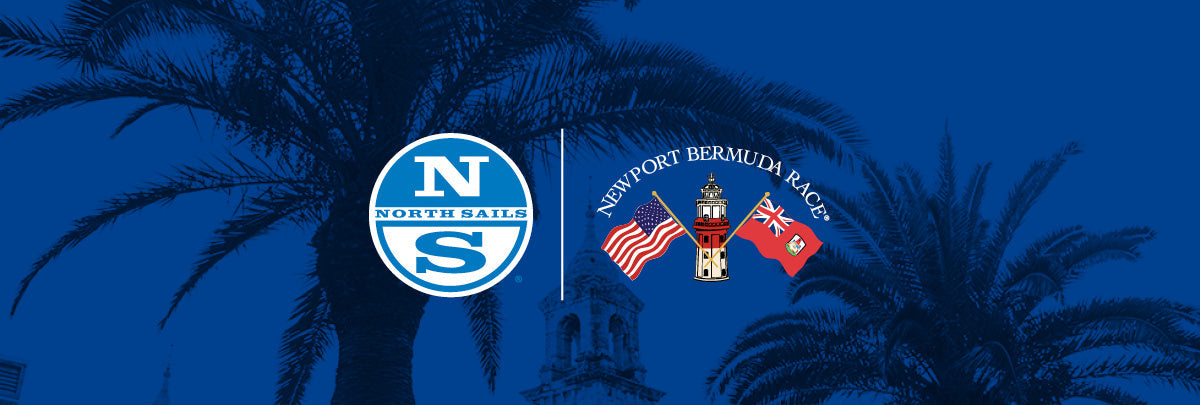NORTH SAILS 2022 NEWPORT BERMUDA RACE TECH BRIEF
NORTH SAILS 2022 NEWPORT BERMUDA RACE TECH BRIEF
Sail Selection and Inventory Optimization

When planning your offshore racing it is crucial to manage your sail inventory. An optimized inventory and sail selection will allow you to maximize performance and ensure your crew is prepared if and when conditions change. While necessary, multiple sail changes are time consuming and draining and having the right sails onboard will greatly contribute to a successful race. As Performance Partner to the Newport Bermuda Race, the North Sails team shares their expert advice on how to build a well planned sail inventory for the 2022 race.
Sail inventory preparation requires extensive research, forethought and planning to get right. One tool used in planning, as Peter Isler referenced in the webinar, is a heat map which uses historical data to predict wind speed and angle for future time periods. Weather and routing data used in conjunction with your boat’s crossover chart will help guide inventory recommendations.
Headsail and Spinnaker Selection
On a non-overlapping rig, jibs are coded with a J and a corresponding number. As the number goes up, the higher the intended wind range of the sail.
- J1 – Performs best in 0-10 knots, while sailing close-hauled or close-reaching.
- J2 – As the wind increases to 11-20 knots, a J2 comes into play.
- J3/ J4 – Above 20 knots, a boat will carry a J3 and sometimes even a J4 (typically not full hoist, and sometimes set on an inner stay).
- Jib Top (JT) – A high clewed (provides a better sheeting angle), non-overlapping headsail that is used when you need to bear off, but don’t want to lose your leech tension. The Jib top will be deployed at different wind speeds (boat- dependent), as it is less area than the big reaching sails, and it helps to bring the effort lower down to the boat, allowing more control over the boat as wind speed increases.
Overlapping boats will typically carry the following sails:
- #1 – 155% Genoa
- #2 – Typically between 130%- 140% depending on the track length and location
- #3 – Non-overlapping blade jib
- Genoa Top – Can be any LP smaller than the biggest Genoa. Handles the close reaching angles. Has the same high clew as a Jib Top for cracking reaching angles especially in breeze.
When it comes to asymmetric sails for the Newport Bermuda Race, North Sails experts recommend an A1 and A3, which will cover the 0- 20 knot range, reaching angles. The A5 would cover a higher wind range, however may not be as relevant for this year’s race, due to the fact that most forecast predictions do not call for this wind range. An A2 and A4 are considered broader winded, running sails. Your A2 will be your biggest sail, as it is intended for VMG running, straight downwind.
Staysails are often referred to as a “free sail,” in terms of a ratings hit. These sails increase performance when seeking extra height and essentially feed the wind on the back of the main. They also help reduce the gap between the headsail and the mast. Reach out to a North Sails expert to discuss options and recommendations for using a staysail.
Code Sail Selection
When thinking about your Code Sails, it is important to ensure your sails will cover the forecasted wind range and play to the strengths and weaknesses of your boat. Consider the rating penalties that correspond with each sail and your rig type. Try running a test certification and consult your North Sails experts for further insight.

One option to increase range is using Helix Structure Luff sails. A radical design innovation once limited to Grand Prix Racing, Helix Structured Luff is now standard on all North Code Sails. A Helix sail uses load sharing technology with the sail’s structure to improve its aerodynamics and in many cases reduce the load on your equipment. The benefit in a distance race like the Newport Bermuda Race is maximizing performance since these versatile sails carry across a wider range.
When looking at the typical Newport Bermuda Race weather, there is a lot of time spent sailing at various reaching angles between 0-15 knots. An advantage of Helix is it allows for a wider crossover with other sails, whilst providing better luff projection for a more powerful sail shape through the range. By engaging the structured luff, trimmers can change sail shape on demand to meet the wind and weather conditions. When considering your course speed, Helix can help you limit multiple sail changes to maintain full power across more miles.
Safety Requirements and Precautions
Lastly, safety preparation is vitally important to ensure a successful offshore race and should be a deciding factor in sail choice. A storm jib and storm trysail should be in your inventory, but a mainsail with a reef that is 50% of P is an acceptable substitute for a trysail. It must attach from a different point than your main boom, be a highly visible color such as orange, red, or green, with easily visible sail numbers.
Make sure your sail repair kit is reviewed and freshly stocked prior to the race. The North Sails service experts recommend having glue, shammys/ towels to properly dry a ripped sail, denatured alcohol, a good knife, palm, leatherman, seam rippers, needles, thread and webbing in your inventory. North experts can provide tutorials for any repairs needed and can also provide a custom patch kit of sail cloths/colors to match your spinnakers.
Connect with Your Local North Loft
Get your sails into the loft ahead of time and consider remeasuring headsails if you are looking to help your rating. Connect with your local North Sails loft to get started today.
Still have questions? Watch the Newport Bermuda Race Sail Selection and Inventory Optimization Webinar with North Sails Experts Tim Dawson, Austin Powers, Jack Orr and Will Bomar.










